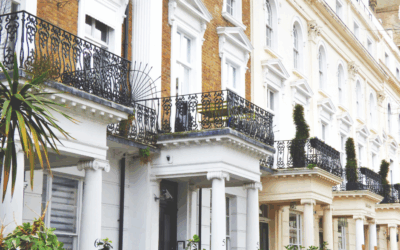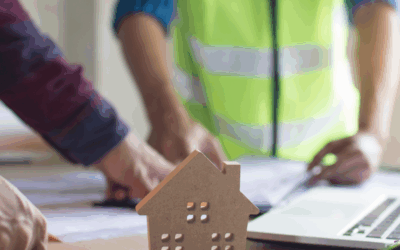Introduction
In the previous article, we focused on gathering and organising the information already available about your building. Now we turn to the next step: identifying any significant gaps and deciding what additional surveys or works – if any – are truly necessary. Too often, this is when residents start to get hit with spiralling costs, so a focused and informed approach is crucial. The goal is to maintain a safe building without imposing needless expenses on residents.
1) Identify and Prioritise the Gaps
A Building Safety Case begins with many assumptions – some critical, some less so. We’ll need to systematically determine which assumptions need to be substantiated with more information. Our approach will be straightforward:
- Assess potential impact – Which assumptions, if incorrect, could most affect resident safety and have the greatest consequences?
- Focus our spending – Which surveys or inspections will remove the most uncertainty and provide us with the most valuable insights?
- Spread the cost – By prioritising the information needed, we can phase the work, spreading the cost so that residents aren’t hit with large bills all at once.
This isn’t about collecting every piece of data possible. It’s about collecting the right data.
2) Avoid Conflicts of Interest
When it comes time to commission surveys or remedial works, it’s not uncommon to encounter professionals who are understandably keen to recommend their own services. Its therefore important that you have impartial advice, driven by actual building needs, not what a potential surveyor or business can provide for a fee.
At ALLRES, our property management is focused on residents, their safety and the long-term value of their investment. Only after thoroughly reviewing what information we already have and carrying out a prioritised gap analysis will we recommend works. At the same time, knowing why we need the information will help us to be clear on precise requirements and scope.
3) Scope and Procurement: Getting It Right
If a gap truly does require more information – be it a fire compartmentation review or a structural integrity check – defining the scope carefully saves time, money, and headaches. Here’s some lessons we’ve learned:
- Break it down: Consider commissioning in stages. For instance, an initial survey might highlight specific areas needing deeper investigation, rather than surveying everything at once.
- Obtain multiple quotes: We’re always surprised by how many managers only get a single quote, especially for something they’ve never commissioned before. By comparing proposals from different providers, you get a sense of market rates and what works or extras are unnecessary to meet the scope.
- Demand actionable outputs: We’ll make sure that the reports and data are provided in a useable format. Recommendations and remedials should be clearly highlighted. Datasets should be structured and formatted in a way that maps to your building so it can be used effectively. We’ll ask for supporting spreadsheets rather than rely on PDFs you can’t filter or sort.
4) Monitor Quality and Delivery
Too often, surveyors are left alone after the order is placed and costly mistakes can happen. Ensuring the work is done properly and provides residents with value is essential. Like all projects and works managed by ALLRES, our approach includes:
- Regular check-ins: Staged progress updates and interim reports that catch issues early, preventing surprises in the final deliverable.
- On-site oversight: For major works, we have someone on-site who is familiar with the building, to periodically verify that the work is aligning with the agreed scope.
- Integrate results: We’ll feed new data into our property management platform, ensuring the buildings ‘golden thread’ is current and avoiding duplication. Asking for the information in the right format up-front really helps.
5) Maximise the Benefits
While the primary aim is to fill critical gaps for your Building Safety Case, as your property manager, we manage your building holistically ensuring every penny spent delivers most value for the building and its residents. Examples of how works to prepare the safety case could have wider benefits if done right include:
- Reducing insurance premiums: Validated information on compartmentation, fire protection systems, or structural resilience can sometimes help when negotiating with insurer.
- Planning maintenance: Detailed survey findings might highlight areas that could be scheduled for maintenance before they escalate into bigger problems.
- Better resident engagement: Transparent, cost-justified projects build trust, especially when they clearly serve resident safety and comfort in the long-run.
If residents are paying for something, it makes sense to get maximum value.
Key Takeaways
- Focus on what matters: Prioritise assumptions or gaps in your information that, if untrue, could compromise resident safety the most.
- Have impartial advice: Ensure your property manager is on your side, and the advice comes from a neutral source, separate from those who stand to gain from the works.
- Define scope carefully: Break surveys into stages, get multiple quotes, and demand outputs that will genuinely inform your safety case.
- Monitor quality: Regularly review interim findings and verify that the work meets its original purpose.
- Look for wider gains: Use new data to in the wider management of the building to lower costs, streamline maintenance, and keep your safety case current.
Taking a measured, methodical approach when commissioning surveys or remedial works means you’ll end up with reliable, cost-effective data that support your Building Safety Case an Report – rather than inflated costs for services you don’t need.
In the next article, we’ll explore the risk assessment workshop – an essential part of preparing the Building Safety Case where the involvement of residents and directors of the resident management company is essential.



